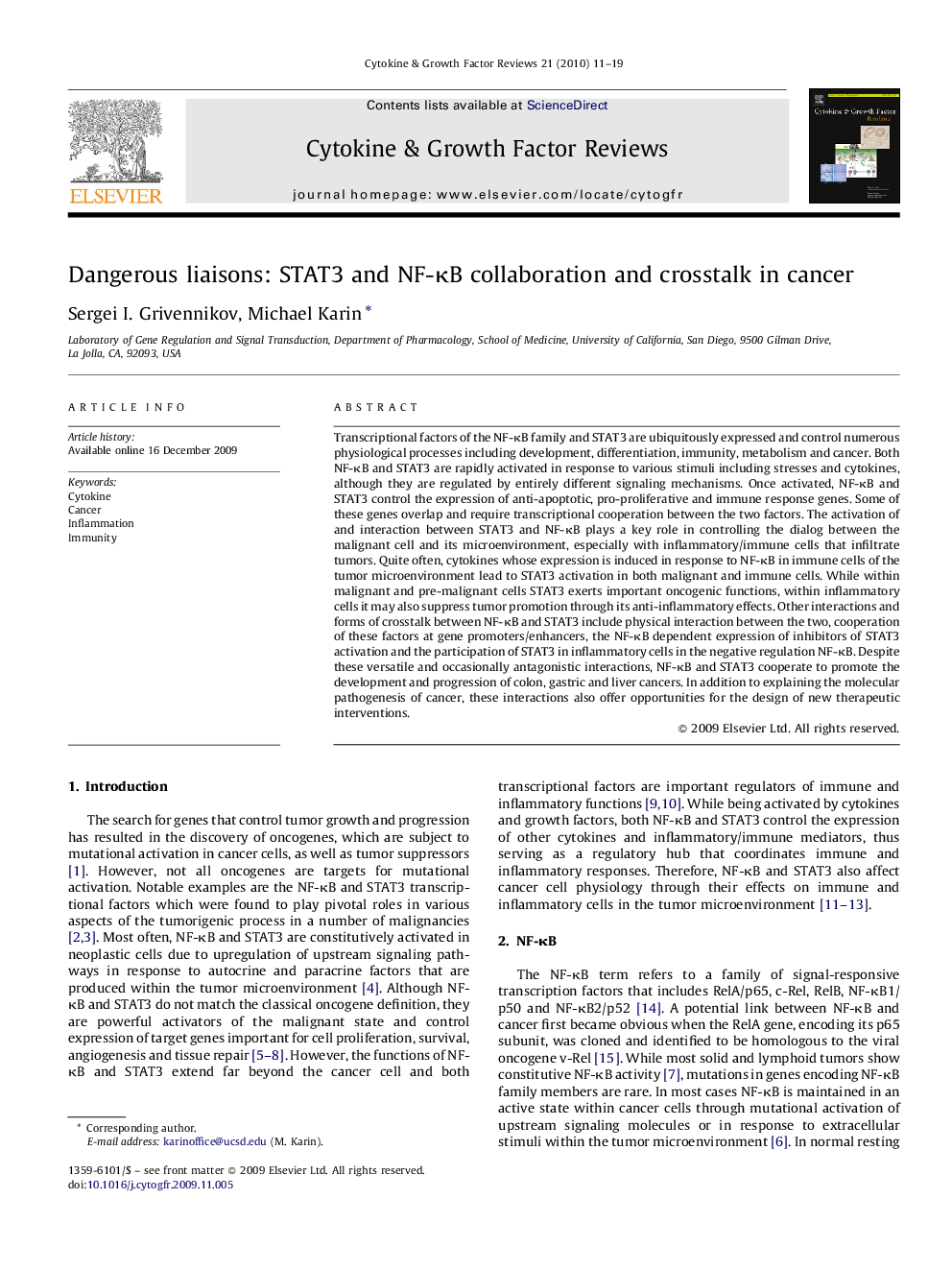| کد مقاله | کد نشریه | سال انتشار | مقاله انگلیسی | نسخه تمام متن |
|---|---|---|---|---|
| 2170726 | 1093401 | 2010 | 9 صفحه PDF | دانلود رایگان |

Transcriptional factors of the NF-κB family and STAT3 are ubiquitously expressed and control numerous physiological processes including development, differentiation, immunity, metabolism and cancer. Both NF-κB and STAT3 are rapidly activated in response to various stimuli including stresses and cytokines, although they are regulated by entirely different signaling mechanisms. Once activated, NF-κB and STAT3 control the expression of anti-apoptotic, pro-proliferative and immune response genes. Some of these genes overlap and require transcriptional cooperation between the two factors. The activation of and interaction between STAT3 and NF-κB plays a key role in controlling the dialog between the malignant cell and its microenvironment, especially with inflammatory/immune cells that infiltrate tumors. Quite often, cytokines whose expression is induced in response to NF-κB in immune cells of the tumor microenvironment lead to STAT3 activation in both malignant and immune cells. While within malignant and pre-malignant cells STAT3 exerts important oncogenic functions, within inflammatory cells it may also suppress tumor promotion through its anti-inflammatory effects. Other interactions and forms of crosstalk between NF-κB and STAT3 include physical interaction between the two, cooperation of these factors at gene promoters/enhancers, the NF-κB dependent expression of inhibitors of STAT3 activation and the participation of STAT3 in inflammatory cells in the negative regulation NF-κB. Despite these versatile and occasionally antagonistic interactions, NF-κB and STAT3 cooperate to promote the development and progression of colon, gastric and liver cancers. In addition to explaining the molecular pathogenesis of cancer, these interactions also offer opportunities for the design of new therapeutic interventions.
Journal: Cytokine & Growth Factor Reviews - Volume 21, Issue 1, February 2010, Pages 11–19